Homemade Tomato Vegetable Juice is so rich, refreshing and has tons of flavor. You can customize the flavor by adding your vegetables of choice.
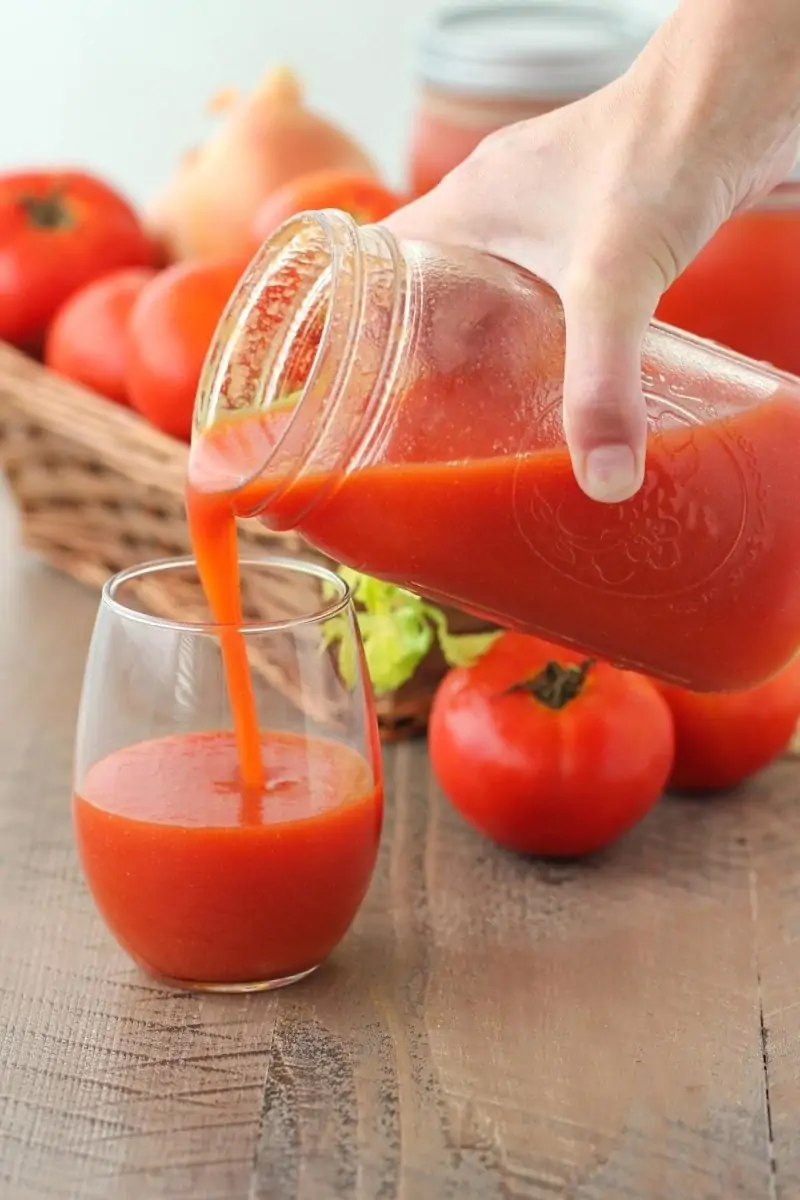
Of all the things you can do to preserve fresh, summer tomatoes, Homemade Tomato Vegetable Juice is one of my favorites. It's so easy to do and you can adjust the flavor of the juice in so many ways, by using a combination of different vegetables that you like.
I like to include a good variety and love the flavor that the tomato juice gets from the onion, garlic, celery and carrots. Of course, you can keep it very simple by just cooking the tomatoes alone and having a very clean tomato flavor. Sometimes, I also like to step it up a notch and add beets, herbs (such as thyme, parsley, dill, etc.), bell peppers and even add some heat to the juice by adding some hot peppers. Today, I am sharing the most simple version, but feel free to add more veggies and to customize the flavor by playing around with different options.
A cold glass of smooth tomato juice, rich in flavor, is a taste of summer sunshine and warmth. If you love Tomato Juice, this homemade version will knock your socks off.
Ingredients:
- tomatoes - you can use any kind of tomatoes to make juice. This is a great way to use up tomatoes that aren't going to win any beauty contests, but will make great juice.
- celery - for me, tomato juice doesn't taste right without celery.
- carrots - carrots will add a bit of sweetness
- onions - onions will also add sweetness and flavor
- garlic - tomatoes and garlic are a match made in heaven. So good!
- whole black peppercorns
- bay leaves - you can use fresh or dry
- sugar - just a bit of sugar to balance the acidity
- salt
- lemon juice - it will add freshness, but also important if you want to can the tomato juice
- Other options: beets, bell peppers, hot peppers, parsnips
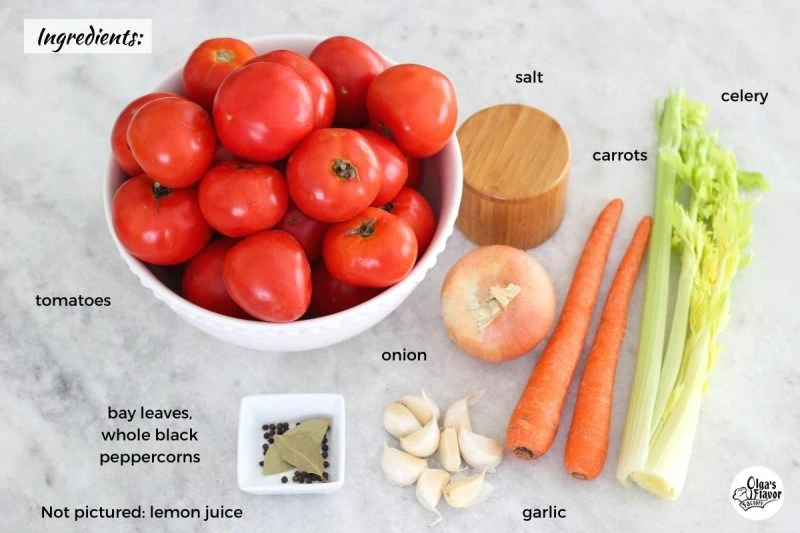
How To Make Homemade Tomato Juice
- Prep the vegetables. Cut the tomatoes in half or quarters. Cut the celery into 3-4 pieces, thinly slice the carrots, peel and quarter the onion, peel the garlic. Honestly, you don't have to cut the tomatoes, but cutting them helps them cook a little bit faster.
- Cook the vegetables. Place all the ingredients EXCEPT the lemon juice in a large stockpot. Bring to a boil. Reduce to a simmer, and keep cooking, for about 30-45 minutes, until all the vegetables are soft.
- If you are using beets and carrots, they take a little bit longer to cook through and get soft, so you will need to cook the juice a little bit longer. If you are just using tomatoes, onions, garlic and celery, 30 minutes should be enough time.
- Mash the cooked tomatoes and vegetables. Use a potato masher or a immersion blender to mash up all the vegetables. This will get you a lot more juice and it will be faster to strain. If you have a food mill, you can use that instead.
- Pour in the lemon juice.
- The lemon juice will help to make sure there is enough acidity to be at a safe ph level for canning. The lemon juice won't change the flavor. Although almost all tomatoes will already be high enough in acidity for canning – it is a simple extra step to ensure safety.
- Strain the tomato juice through a fine mesh sieve, pushing on the vegetable solids to extract as much juice as possible. Taste the tomato juice and add more salt and/or sugar if needed.
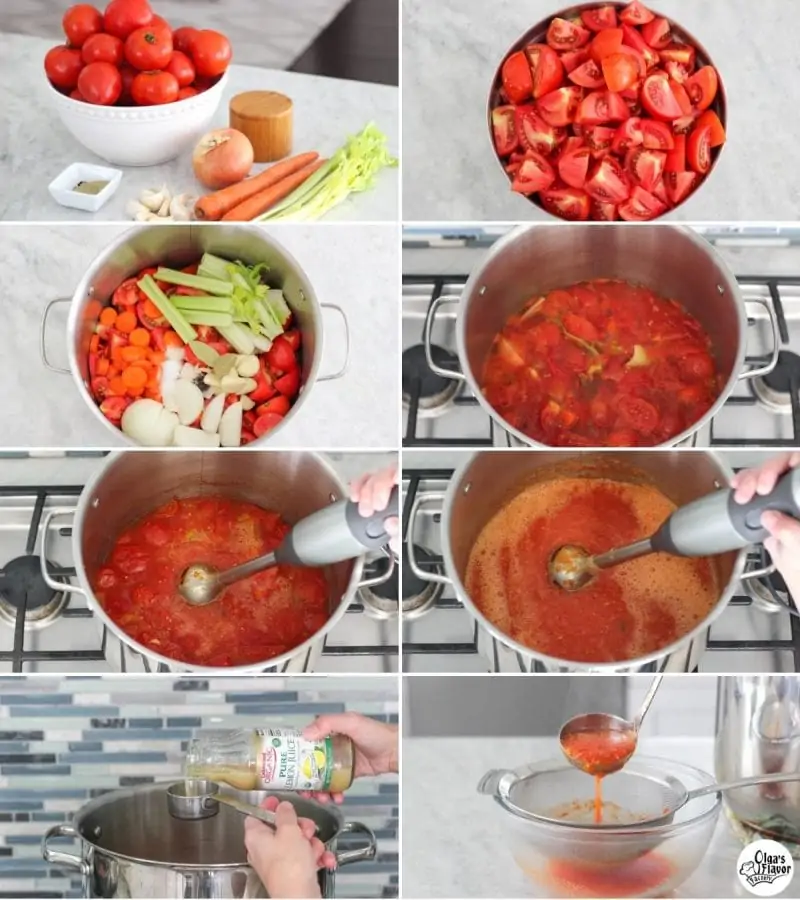
How To Store Tomato Juice
If you don't sterilize the jars, the juice will keep for about 1-2 weeks in the refrigerator. You can also freeze tomato juice for up to 1 year.
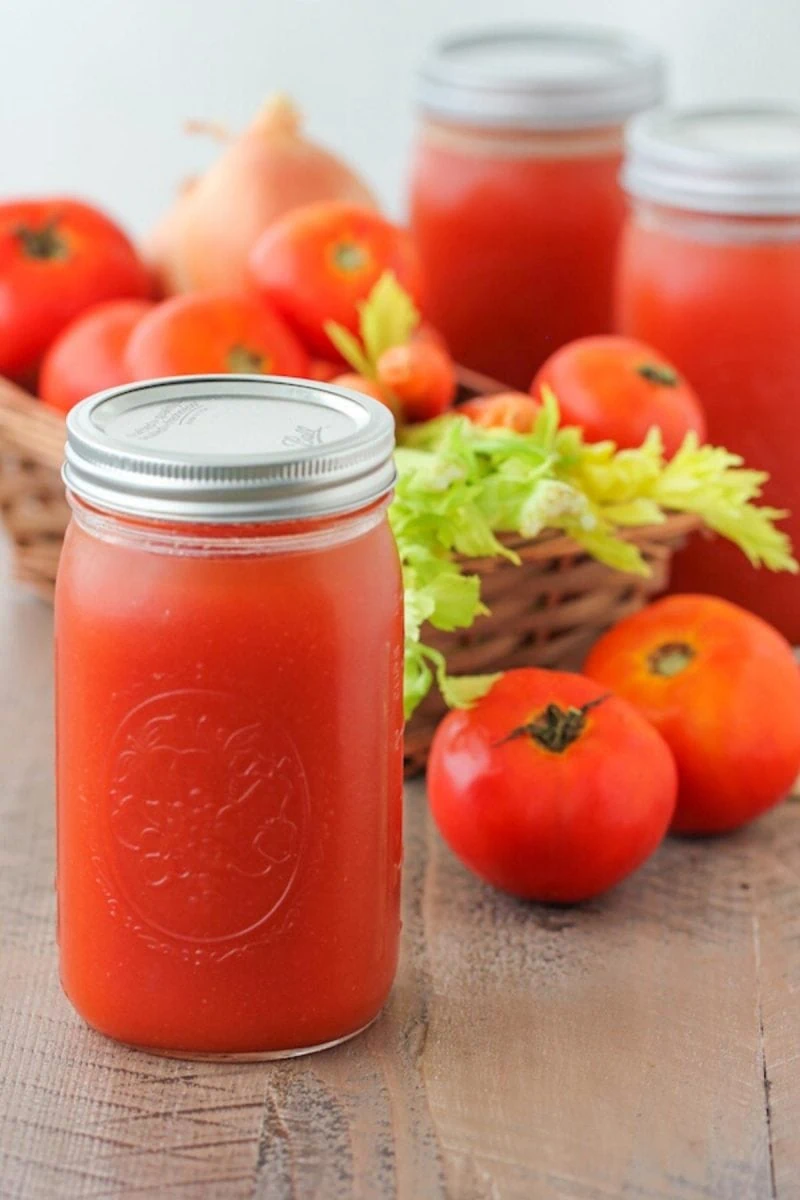
There is something so satisfying about pulling out a cold jar of homemade tomato juice from your refrigerator. The flavor is unbeatable!
How to Sterilize the Canning Jars
This is how I sterilize jars.
Wash the jars and lids in hot and soapy water. Then I place the glass jars in a 200 degrees Fahrenheit oven for about 15 minutes.
Using your dishwasher works great too. The really hot water in the dishwasher does an excellent job at getting your jars ready for canning.
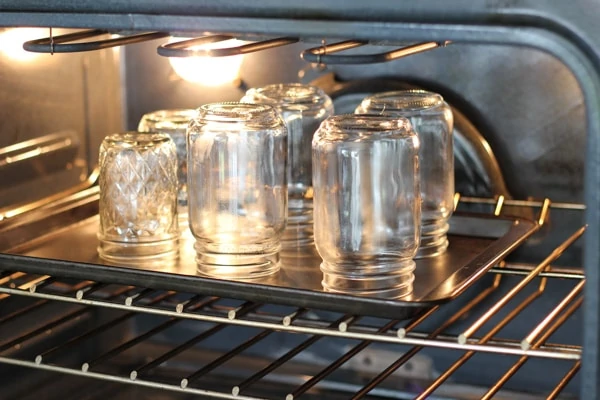
For the lids, I usually bring a pot of water to a boil, take it off the heat and let the lids stay in the boiling water for 10-15 minutes also. DON'T BOIL THE LIDS.
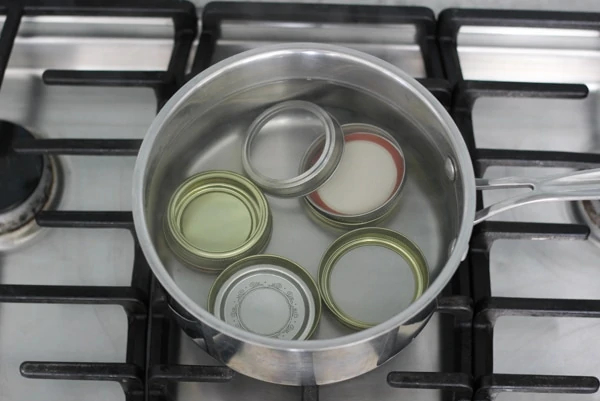
How To Can Tomato Juice
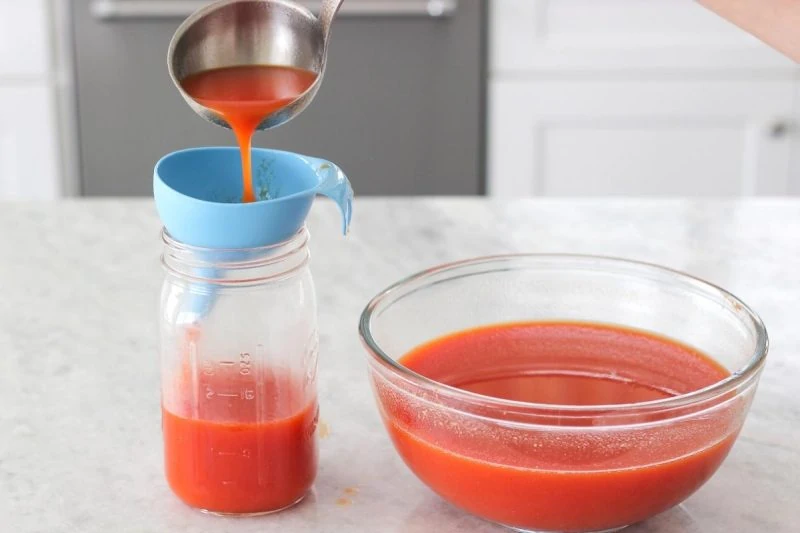
Pour the strained juice into the sterilized jars, leaving about ½" of space at the top. Wipe the rims of the jars so that they seal properly and top with the lids.
Out of this amount of tomatoes and vegetables, I was able to get 4 quarts plus a little bit extra. The amount will be slightly different, depending on how juicy the tomatoes are that you are using.
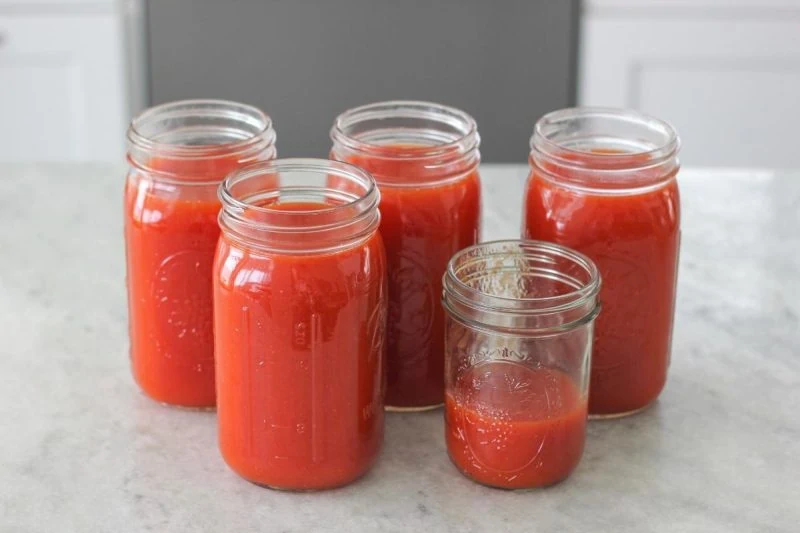
Place sealed jars in boiling water bath for about 10 minutes. (Make sure you place a towel at the bottom of the pot, so that the jars are not directly touching the pot. Remove from the water and cool completely.

Store opened jars of juice in the refrigerator.
More Amazing Recipes For Preserving Produce:
- Adjika (Russian Tomato Pepper Salsa) - one of my personal favorites!
- Garlic Dill Pickle Spears
- Homemade Strawberry Jam
- Marinated Tomato and Cucumber Salad
Tomato Vegetable Juice
Homemade Tomato Vegetable Juice is so rich, refreshing and has tons of flavor. You can customize the flavor by adding your vegetables of choice.
- Prep Time: 35 mins
- Cook Time: 40 mins
- Total Time: 1 hour 15 mins
- Yield: 4 quarts
- Category: Miscellaneous
Ingredients
- 10 lbs tomatoes
- 3-5 ribs of celery
- 2 carrots
- 1-2 onions
- 8 garlic cloves
- ½ - 1 Tablespoon black peppercorns
- 2 bay leaves
- 1 Tablespoon granulated sugar
- 1 Tablespoon salt
- ¼ cup lemon juice
- optional, beets (1 small), bell pepper (1), parsnips (1-3)
- fresh herbs (parsley, basil, thyme, rosemary, etc.)
Instructions
- Cut the tomatoes in half or quarters. Cut the celery into 3-4 pieces, thinly slice the carrots, peel and quarter the onion, peel the garlic. Honestly, you don't have to cut the tomatoes, but cutting them helps them cook a little bit faster.
- Place all the ingredients EXCEPT the lemon juice in a large stockpot. Bring to a boil. Reduce to a simmer, and keep cooking, for about 30-45 minutes, until all the vegetables are soft.
- If you are using beets and carrots, they take a little bit longer to cook through and get soft, so you will need to cook the juice a little bit longer. If you are just using tomatoes, onions, garlic and celery, 30 minutes should be enough time.
- Use a potato masher or a immersion blender to mash up all the vegetables. This will get you a lot more juice and it will be faster to strain. If you have a food mill, you can use that instead. Pour in the lemon juice.
- The lemon juice will help to make sure there is enough acidity to be at a safe ph level for canning. The lemon juice won't change the flavor. Although almost all tomatoes will already be high enough in acidity for canning – it is a simple extra step to ensure safety.
- Strain the tomato juice through a fine mesh sieve, pushing on the vegetable solids to extract as much juice as possible. Taste the tomato juice and add more salt and/or sugar if needed.
- If you don't sterilize the jars, the juice will keep for about 1-2 weeks in the refrigerator. You can also freeze tomato juice for up to 1 year.
- Sterilize your canning jars and lids. Wash the jars and lids in hot and soapy water. Then, place the glass jars in a 200 degrees Fahrenheit oven for about 15 minutes. Using your dishwasher works great too.
- For the lids, I usually bring a pot of water to a boil, take it off the heat and let the lids stay in the boiling water for 10-15 minutes also.
- Pour the strained juice into the sterilized jars, leaving about ½" of space at the top. Wipe the rims of the jars so that they seal properly and top with the lids.
- Out of this amount of tomatoes and vegetables, I was able to get 4 quarts plus a little bit extra. The amount will be slightly different, depending on how juicy the tomatoes are that you are using.
- Place sealed jars in boiling water bath for about 10 minutes. (Make sure you place a towel at the bottom of the pot, so that the jars are not directly touching the pot.) Remove from the water and cool completely.
- Store open jars of juice in the refrigerator for up to 1 week.

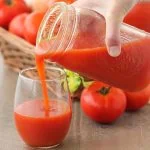
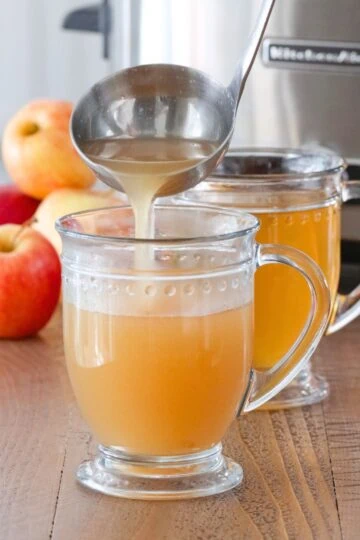

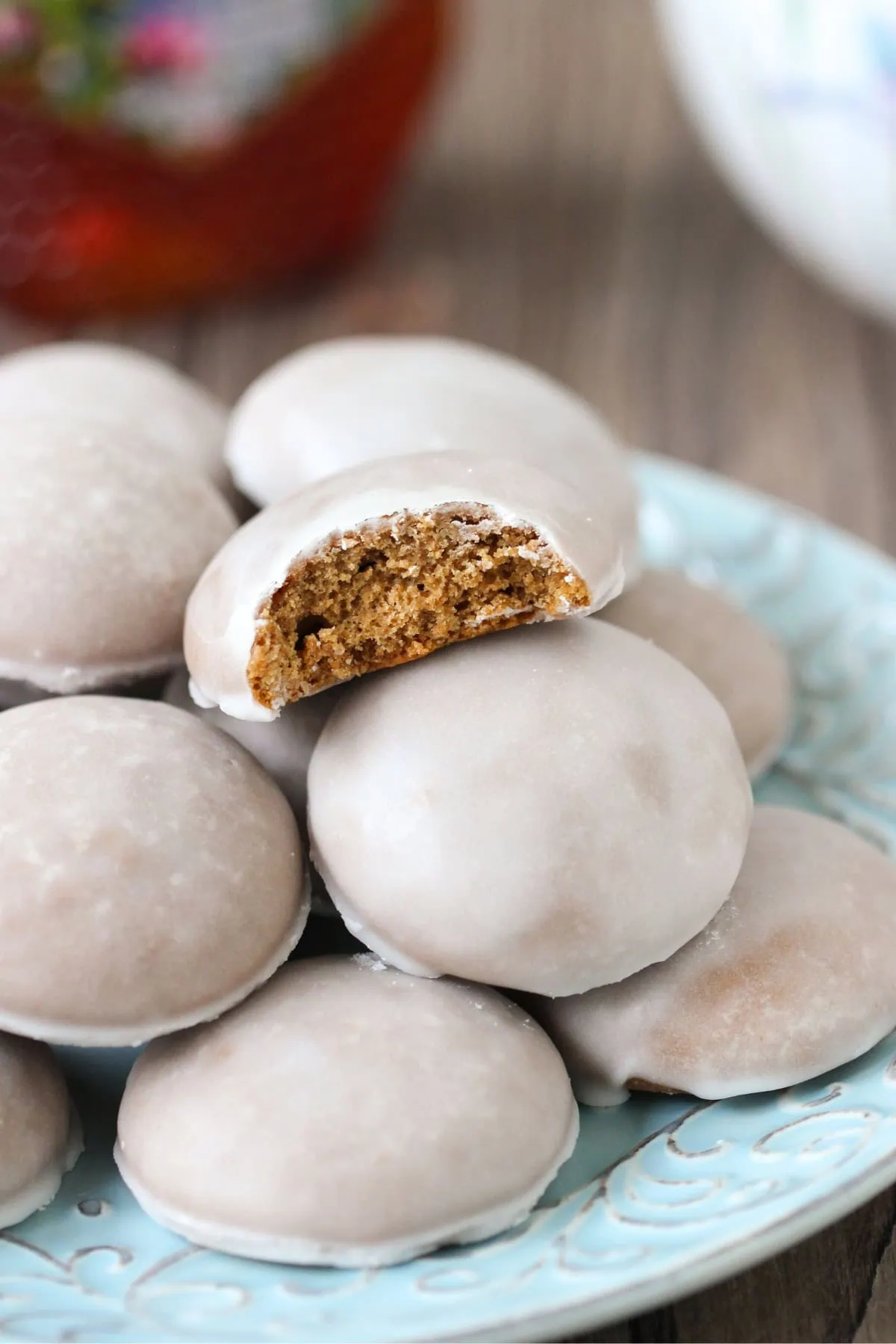
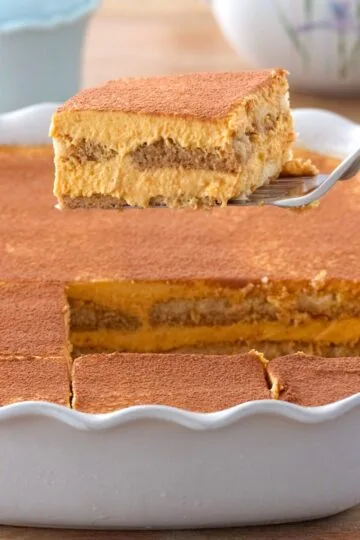
Made this today, and it's my new favorite tomato juice! I love the blend of celery, onion, carrot and garlic, and fresh herbs to give it a sweet and savory flavor. Thank you for sharing and happy canning!
That's wonderful, Jennifer! I am so glad that you enjoy this tomato juice. I appreciate you taking the time to write.
you mention beets in the directions, but the ingredient list doesn't list it. How many beets do you add? is that with the same amount of carrots or is it half carrots/beets?
I added it into the instructions, Sandy.
I’m going to try your tomato juice tomorrow , just bought a juicer today. Just wondering if your juice made your stomach do a dance too??
I haven't had any issues with my stomach, but of course, food has different effects on different people.
I also don't use a juicer to make this juice, but you can of course do so if you want.
Seasoning is everything with tomato juice. For more flavor, you can add herbs to it such as basil or parsley. As you get better at canning tomato juice, you'll find a combination of seasoning that gives you the best tasting juice. It will be juice you can't find anywhere else because it's your very own.
Thank you for the tomato juice recipe. I've always liked to drink well chilled tomato juice. Do you think there is a way doing it in the Instant Pot to make the process go a little faster?
P.S. I sterilize my jars and lids exactly the same way. Most jars kept canned goods stored in garage up to 4-5 years and still were good.
Hi Lora. You're welcome for the recipe; I like to drink my tomato juice really cold too:).
You probably can make it in the Instant Pot, however, you will get a very small amount of juice if you make it there, so I prefer to use the stovetop method because I like making a huge batch at once.
I used to make tomato juice all the time when I had a garden! I can't wait to start my garden back up again once we finish building our house. I love how you combined this tomato juice with other veggies for more of a vegetable stock flavor. I will definitely bookmark this recipe for the future.
I'm hoping to have a garden someday too, Katy:). That's so exciting that you are building you house. I wish you all the best.
Thank you so much for the recipe. I have been waiting for it since we have lots of tomatoes and I want to make as much use of it as possible. Plus fresh tomatoe juice in winter sounds just amazing. Quick question so if I follow all the steps can the tomatoe juice be stable on the shelf till winter? Or only if frozen?...
If you sterilize the jars properly, they should be shelf stable. You can freeze the juice if you'd like, but you don't need to.